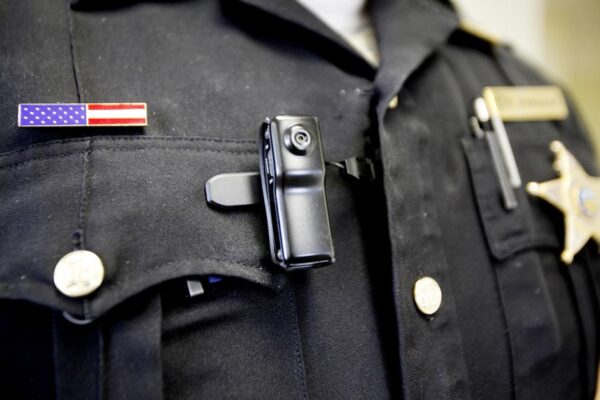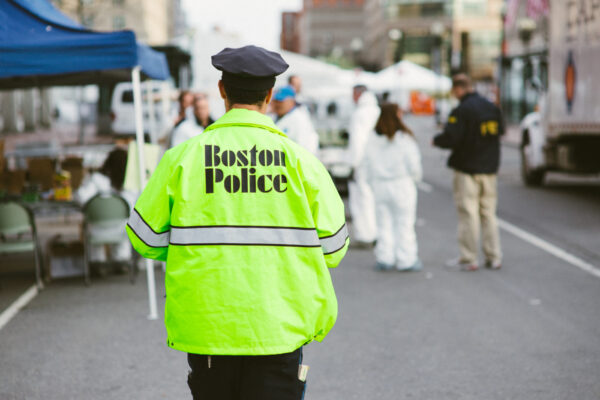No Tape, No Testimony: How Courts Can Ensure the Responsible Use of Body Cameras
Police departments are not the only institutions capable of assuring the effective use of body-worn cameras. Courts can do it, too.
For three reasons, courts can and should encourage the police to record, when practicable, their investigative encounters with civilians.
- Videos of police-civilian encounters have shaken public confidence in the capacity of legal proceedings to separate fact from fiction.
- Police body-worn cameras present a viable and valuable supplement to witness testimony.
- Courts have both a distinct interest in and a unique means of encouraging police officers to record their encounters with civilians.
This report, produced by the ACLU of Massachusetts and the Samuelson Law, Technology & Public Policy Clinic at the University of California, Berkeley, School of Law, proposes a model jury instruction that encourages the recording of police-civilian encounters by empowering juries to impose evidentiary consequences for unreasonable or bad faith failures to record.
Download the report
Appendix
The following appendix shows incidents in which police officers wore body cameras but did not turn them on to record encounters that led to civilian injuries and deaths.
Civilians reportedly killed by officers wearing body cameras that were not turned on:
- Justine Damond (Minneapolis, MN, July 15, 2017)
- Lorenzo Antoine Cruz (Rocklin, CA, Feb. 25, 2017)
- Keith Lamont Scott (Charlotte, NC, Sept. 20, 2016)
- Terrence Sterling (Washington, DC, Sept. 11, 2016)
- Paul O’Neal (Chicago, IL, July, 28, 2016)
- Dalvin Hollins (Tempe, AZ, July 28, 2016)
- Alva Braziel (Houston, TX, July 9, 2016)
- * Alton Sterling (Baton Rouge, LA, July 5, 2016)
- Lamontez Jones (San Diego, CA, Oct. 20, 2015)
- Ricky Ball (Columbus, MS, Oct. 16, 2015)
- Patrick O’Grady (Fountain, CO, Sept. 24, 2015)
- Jeffory Tevis (Tuscaloosa, AL, Aug. 20, 2015)
- Fridoon Zalbeg Rawshannehad (San Diego, CA, Apr. 30, 2015)
- Ty Worthington (South Jordan, UT, November 22, 2014)
- Darrien Hunt (Saratoga Springs, UT, Sept. 10, 2014)
- Mary Hawkes (Albuquerque, NM, Apr. 21, 2014)
* Body cameras were on but dislodged
Civilians reportedly injured by officers wearing body cameras that were not turned on:
- Marissa Morris (Flagstaff, AZ, Nov. 16, 2016)
- Marc Jeffers (Washington, DC, Sept. 7, 2016)
- James Jarrard (Fairfield, CA, Mar. 28, 2016)
- Kimberly McNeil (Henrico, VA, Dec. 15, 2015)
- Jeffrey L. Hill (Joplin, MO, Nov. 30, 2015)
- Stanislav Petrov (San Francisco, CA, Nov. 12, 2015)
- James Hemingway (Burlington, VT, Sept. 20, 2015)
- Adrian Marthell (Albuquerque, NM, Mar. 20, 2015)
- Joseph E. Hensz (Spokane, WA, Nov. 8, 2014)
- Armand Bennett (New Orleans, LA, Aug. 10, 2014)
- Christine Chippewa (Daytona Beach, FL, June 13, 2013)
Police officers reportedly killed wearing body cameras that were not turned on:
- Officer Jonathan De Guzman (San Diego, CA, July 28, 2016)
- Officer Robert German (Windermere, FL, Mar. 22, 2014)
Related Content


